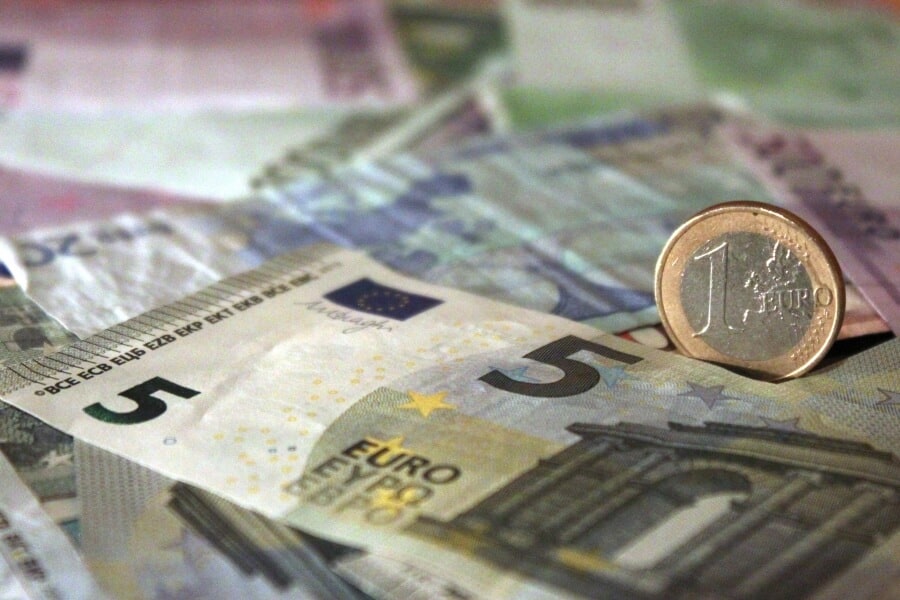We learned to ignore the currency as it daily passes through our hands. Therefore we usually fail to identify rare collector’s pieces worth much more than their nominal value or a deceitful counterfeit that could get us to jail.
In the first half of 2014, European Central Bank withdrew 331,000 false banknotes, which amounts to long termed average. ECB has discovered approximately 333,800 counterfeits every half a year since 2009. While the number represents relatively small part of overall 16 billion euros in circulation, unknown amount of fakes goes undetected.
Print out some “gnocchi”!
On 12th December 2014, Italian Police confiscated € 556.000 in coins illegally created in China and shipped to the port of Naples. Just a month earlier, the investigators arrested 56 mafia forgers from the same area. The criminals supposedly produced the majority of false banknotes on European market. Their gang employed different cells, one for acquisition of special money paper, other for printing and another for distribution. They nicknamed the false banknotes “gnocchi” and came up even with € 300 banknote which does not really exist. European legislation prescribes minimal sentence of 8 years in jail for such organized crime, yet in this regard European countries rank to those with lesser punishments.
Four levels of protection
Even a person that simply pays with false money may be imprisoned, in Europe usually up to 2 years. Therefore one should be reasonably cautious. The banknotes worldwide are commonly protected with four systems of features. The first consists of features that are top secret and known only to national banks. The second system is made of special signs that are verifiable by machines in commercial banks and financial institutions. The third system is visible when you put the banknote under UV shining. It should highlight different motives of the picture on the banknote. The fourth system includes strictly printed lines, shiny fibres and numbers, holograms or watermarks that may be recognized just visually.

Who is worth 500 €?
An inventive handyman in the Czech Republic tried to cut 10 banknotes into 22 pieces and glue back 11 “brand new” banknotes, just a bit smaller than the original. However, the face on the banknote looked malformed and the forger was revealed. Our eyes are able to detect even tiny anomaly in human faces and therefore most of banknotes depict heads, busts or figures of (famous) people. For example British £50 banknote shows inventors of steam engine Matthew Boulton and James Watt. Russian 1.000 Rubles banknote pictures the statute of Yaroslav the Wise. Czech 5.000CZK portrays first Czechoslovak president T.G. Masaryk. Nevertheless, the euros display only architectonical motives, since EU member states were not able to decide which personalities to put on the banknotes. Yet, the ancient mythological character Europa should appear as a hologram on new € 20 banknote issued this year. € 20 and € 50 are the most handed and also counterfeited banknotes. Europe, together with raised lines on the edges, shiny emerald numbers at the corners and other protection features should stop the forgers.

Currency Lifecycle
The protection of coins is usually achieved by special production alloy. If you throw counterfeited coin into a vending machine, it will scarcely react. Moreover, if you look at a coin closely, you will find a small sign – a symbol of its producer such as maple leave for coining factory in Canada. Coins are counterfeited less often – although it is harder to detect a fake, it is also more demanding to create it. Inflation also decreases the value of coins, so the costs of their production may be bigger than their actual value. As a result, some banknote values are transformed into coins while higher banknote values are introduced. Inflation may be even faster than the issuer of money. In 2009, Zimbabwe fell into hyperinflation. Local currency from that period included biggest banknotes ever such as one hundred trillion dollars.

Learn & Earn: 20.000 for 200
Another reason to regularly inspect your wallet is rather positive. Even genuine money producers make mistakes and sometimes create coins or banknotes with anomalies. Those pieces with certain irregularity are highly priced by collectors and can earn you a fortune. E.g. some € 50 banknotes produced in 2002 carry wrong security filament that reads 100 EURO (instead of 50 EURO). The collectors are willing to pay around € 180 for that note. Another € 10 error that lacked certain printing on the front side was sold for $ 570 on e-bay. Even more incredible misprint dates back to division of Czechoslovakia in 1993. To get new currency quickly, the Czech Republic had its money printed abroad. A printing house in France accidentally used wrong security filament from another series order that read “Republique du Zaire” for 200CZK banknote. Just a few of those banknotes are supposed to remain circulating and their price on collectors’ market starts hundred times higher than the nominal value.
However, the collectors may be the only people who will admire the beauty of banknotes in the future. Contactless credit cards, online and cell phone payments and even virtual currencies like bitcoin lower the amount of circulated tangible money. As the number of mobile payments rocketed six times higher for last 4 years, Moliere’s character Harpagon could be further shown rather wirelessly controlling his account than suspiciously guarding his chest of gold.
Pictures: author; ECB, CNB, RBZ
Support us!
All your donations will be used to pay the magazine’s journalists and to support the ongoing costs of maintaining the site.
Share this post
Interested in co-operating with us?
We are open to co-operation from writers and businesses alike. You can reach us on our email at [email protected]/[email protected] and we will get back to you as quick as we can.









